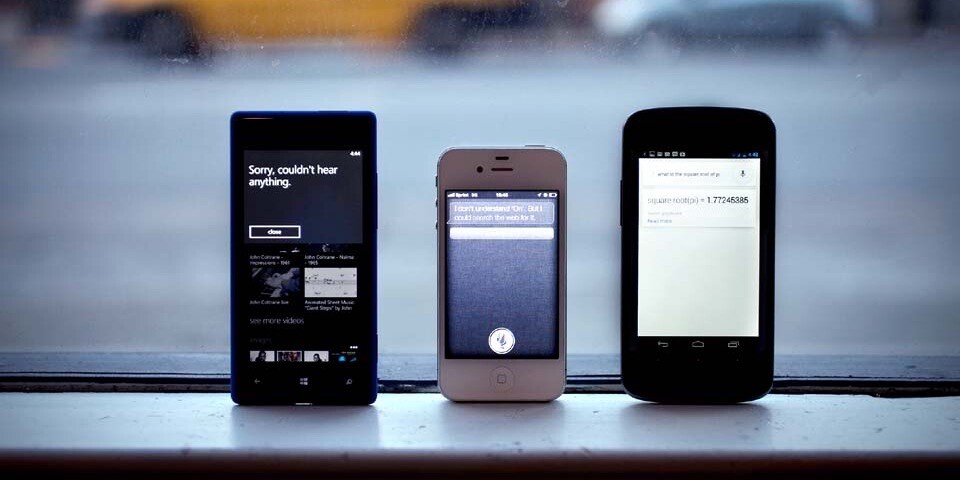
Thin Phones, Fat Websites and the New Internet
You’ve had this problem: you click on a website and a pop-up ad loads… and loads… and then your browser freezes. You click on a site cluttered with ads, sign-up boxes and slideshows. Or you land on a page with so many flashing, rolling and blinking gizmos that you think you’ve set foot in a Vegas casino. Is the Internet bigger, more bloated and bulkier to use?
The fixes to browsing bloated, sluggish sites are almost primitive: click the back button, shut down your browser, maybe disable some plugins. But more people than ever simply pull out their tablets to use cleaner, stripped-down mobile sites. The move from a cluttered, overloaded Web to a simpler, faster mobile mirrors a major shift in how we access the Internet, which will change your experience in fundamental ways.
Websites, in general, are big and getting bigger. Not just in the number of pages, but by file size: the average page ballooned to up to 1.2-megabyte in 2012, according to HTTP Archive. At its current rate, pages will grow to 2-megabytes by 2015 — about half the size of an MP3 file. So what’s makeing pages so bulky?
Images are growing in quality and resolution. And scripts for ads, social sharing and analytics, among others, are adding to the flabbiness. Video elements, too, like Flash are still popular, fueled by an insatiable desire for multimedia. As the Internet becomes the go-to place for entertainment — whether it’s Netflix streaming, YouTube videos or catching up on news — bigger and content heavier sites will follow.
For the most part, infrastructure has kept up with the bigger pages — faster broadband, speedier browsers and more powerful processors — but advances in technology often create problems, and better devices are pushing the Internet to bulk-up. When Apple integrated better displays in the iPhone and iPad, for example, sites started using more beautiful pictures and videos. That means bigger files but slower sites, even under the best broadband and browser conditions. And the Web is failing to meet those razor-thin margins. On average, PCs downloads take around six seconds worldwide, according to the New York Times, and 3.5 seconds in the U.S.
Patience Is Growing Thin
As pages grow in size, people’s patience in browsing has decreased, leading to a gap in expectations and the sluggish reality on the screen. The result: you don’t stick around on slow sites. Researchers found that people don’t come back to a site if it’s 250 milliseconds, or 0.25 seconds, slower than similar sites.
“Two hundred fifty milliseconds, either slower or faster, is close to the magic number now for competitive advantage on the Web,” said Harry Shum, a speed specialist at Microsoft.
Fatter pages — along with decreasing levels of patience and strained servers from a rise of smartphones and tablets — are creating a frustrating Web browsing experience. But the mobile Web is progressing in the opposite direction, getting faster as software and networks improve. As mobile improves — and cellular speeds up — a leaner, faster experience will offer a less cluttered and bloated alternative.
Stripped-down mobile sites — and apps — are already are meeting the growing demand. For example, I use apps for Twitter, Tumblr and Facebook, among others, to avoid clunky loading times and freezing browsers. And I’m not the only one who prefers them. According to Forbes, in 2013, mobile devices will pass PCs as the most common way to use the Web. And that sea change will alter — and give birth — ways companies make money on the Internet.
Living In a Mobile World
More smartphone ownership, of course, fuels the shift to mobile. But how people use them will shape the next face of the Internet. On average, you spend around two and a half hours socializing on the phone, according to a Microsoft study. In addition, we watch more than 200 million YouTube videos on smartphones and tablets each day — and those numbers will only grow.
Naturally, carriers benefit from the shift, with metered data plans offering fee-based buckets of data. As traffic grows, telecoms will finesse their plans, perhaps even charging more for faster speeds — like what broadband companies do now. And as more devices clog up data pipelines, carriers will build more networks to ease congestion.
When the Web took off in the early ’90s, a similar phenomenon plagued networks as bottlenecks created unbearably long load times. To ease the traffic, companies laid fiber-optic cables and developed algorithms to better distribute data around the world. Mobile devices can also lean on Wi-Fi, helping to ease cellular congestion, with platforms and browsers rendering data at faster speeds.
As the mobile Web improves, mobile ads will take off as well. Right now, mobile ads command a fraction of the revenue traditional ads take in. But as traffic changes, that’ll shift the way businesses monetize their audience. But will the mobile experience become polluted too?
Perhaps. Sites are adopting HTML5 technology, for example, allowing videos to play across all browsers. So those flashing gizmos you hate may become a regular fixture on the mobile Web. But the biggest challenge to growth is security — mobile is more vulnerable to attacks than PCs, making smartphones appealing to hackers. But people, fortunately, understand that. For example, nearly nine-in-ten consumers prefer buying on a laptop or computer, according to eMarketer, instead of a handset. People like the ease of mobile, but they don’t trust it. So if companies want to make the most of mobile, they’ll have to overcome a serious trust hurdle.
Still, no matter the obstacle, the tsunami of mobile usage is beginning — and with the rest of the world yet to move to smartphones from feature phones, the momentum is just starting. The change will affect the way you use the Internet — but maybe, if you’re lucky, you won’t have to wait as long for it to load.

